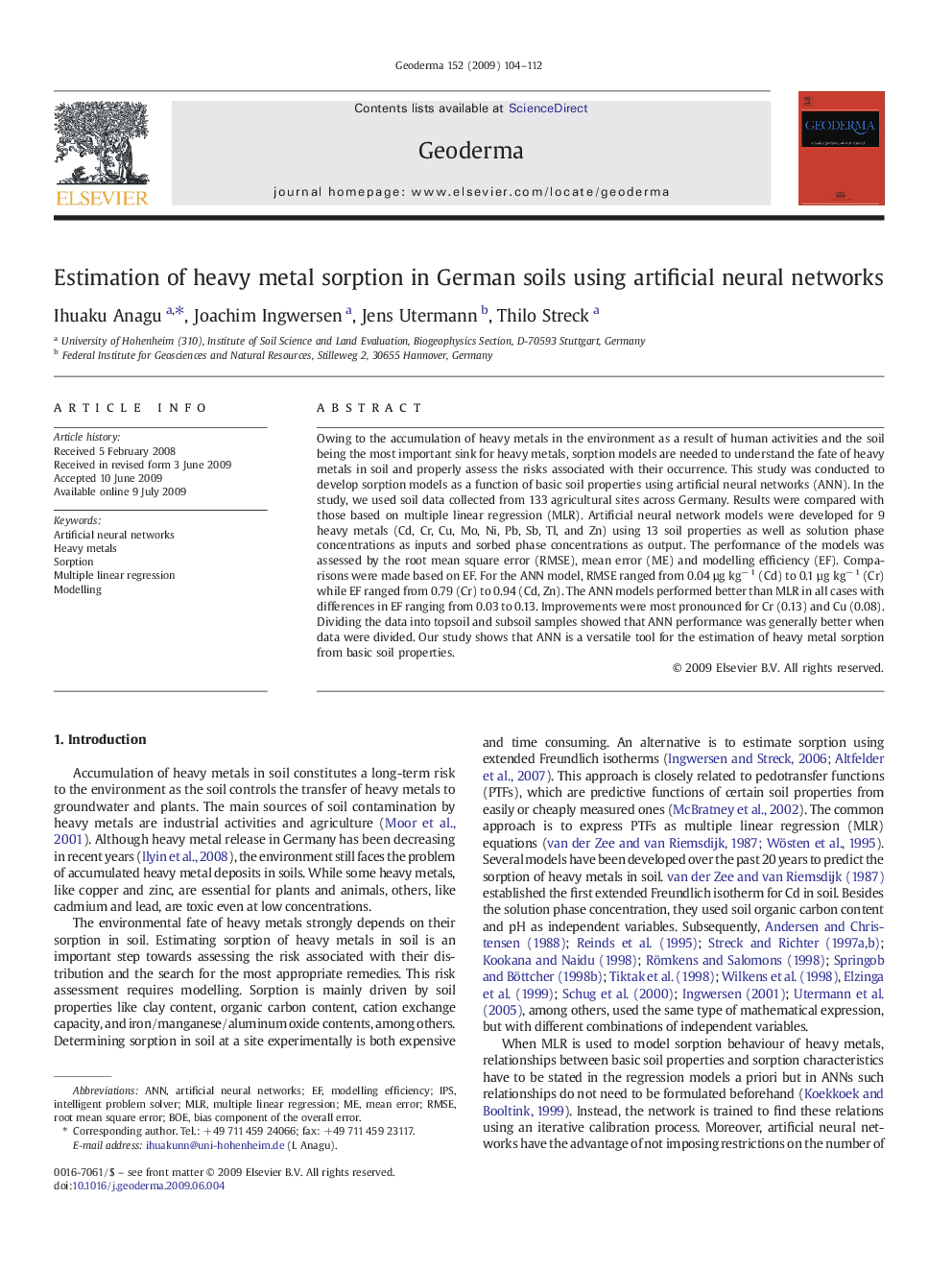| Article ID | Journal | Published Year | Pages | File Type |
|---|---|---|---|---|
| 4574614 | Geoderma | 2009 | 9 Pages |
Owing to the accumulation of heavy metals in the environment as a result of human activities and the soil being the most important sink for heavy metals, sorption models are needed to understand the fate of heavy metals in soil and properly assess the risks associated with their occurrence. This study was conducted to develop sorption models as a function of basic soil properties using artificial neural networks (ANN). In the study, we used soil data collected from 133 agricultural sites across Germany. Results were compared with those based on multiple linear regression (MLR). Artificial neural network models were developed for 9 heavy metals (Cd, Cr, Cu, Mo, Ni, Pb, Sb, Tl, and Zn) using 13 soil properties as well as solution phase concentrations as inputs and sorbed phase concentrations as output. The performance of the models was assessed by the root mean square error (RMSE), mean error (ME) and modelling efficiency (EF). Comparisons were made based on EF. For the ANN model, RMSE ranged from 0.04 µg kg− 1 (Cd) to 0.1 µg kg− 1 (Cr) while EF ranged from 0.79 (Cr) to 0.94 (Cd, Zn). The ANN models performed better than MLR in all cases with differences in EF ranging from 0.03 to 0.13. Improvements were most pronounced for Cr (0.13) and Cu (0.08). Dividing the data into topsoil and subsoil samples showed that ANN performance was generally better when data were divided. Our study shows that ANN is a versatile tool for the estimation of heavy metal sorption from basic soil properties.
